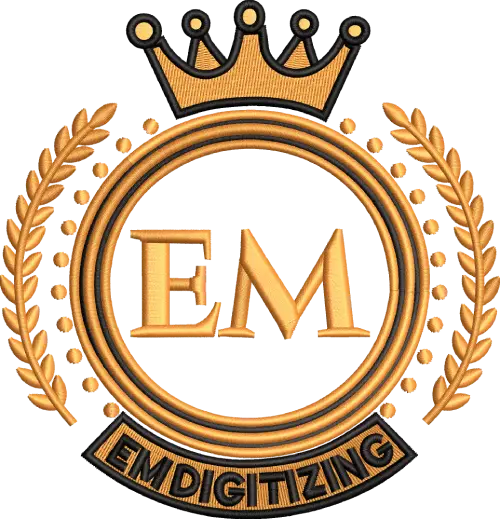Das Recht wählen Stoff für Quilts unterstützt könnte wie ein kleiner Schritt erscheinen, Aber es ist einer der wichtigsten Teile von Quilting. Es wirkt sich aus, wie sich Ihr Quilt anfühlt, Wie lange dauert es, und wie ordentlich es am Ende aussieht.

Egal, ob Sie eine gemütliche Babydecke machen, ein dekoratives Stück, oder eine Bettdecke für den täglichen Gebrauch, Ihre Wahl des Hintergrunds kann wirklich einen Unterschied machen.
In diesem Artikel, Sie lernen, wie Sie den perfekten Stoff auswählen, indem Sie verschiedene Typen verstehen, richtig messen, und vorausdenken. Lass uns eintauchen.
So wählen Sie den rechten Sicherungsstoff für Quilts aus?
1. Zuerst, Denken Sie darüber nach, wofür der Quilt ist
Fangen wir einfach an. Fragen Sie sich:
Für wen ist dieser Quilt? Wofür werden sie es verwenden??
Hier ein paar Beispiele:
- Ist es für ein Baby?? Dann willst du etwas Weiches und sanfte.
- Ist es für den täglichen Gebrauch auf einem Bett? Sie brauchen etwas Waschbares und Langlebiges.
- Ist es nur zur Dekoration? Dann wird der Komfort keine Rolle spielen, wie es aussieht.!
Sobald Sie den Zweck des Quilt kennen, Stoff wählen wird so viel einfacher. Ein Display -Quilt und eine Kuscheldecke benötigen nicht die gleiche Art von Unterstützung.
2. Nehmen Sie Messungen vor dem Kauf des Stoffes durch
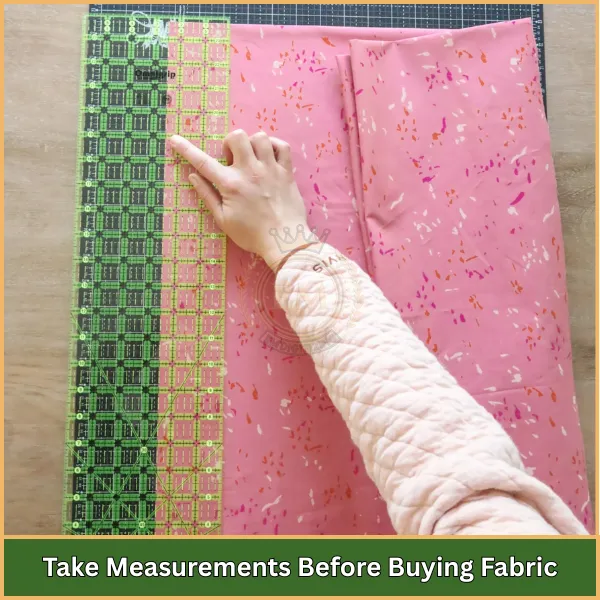
Jetzt, wo Sie den Zweck des Quilt kennen, Es ist Zeit zu messen.
Hier ist die Regel:
Ihre Unterstützung sollte mindestens sein 4 Zoll größer Auf allen Seiten als Ihr Quilt -Top. Das soll Raum für Quilten und Trimmen geben.Nehmen wir an, Ihr Quilt -Top ist 60 "x 80"., Ihre Unterstützung sollte also 68 "x 88" sein.
Ebenfalls, Betrachten Sie den Stoff Breite. Die meisten Quiltkottons sind 42–45 Zoll breit. Also, wenn Ihr Quilt breiter ist, du kannst:
- Stück zwei oder mehr Paneele zusammen
- Oder verwenden breiter Rückenstoff für Quilts, die in Breiten bis zu 108 ”geliefert werden
Tipp: Für große Quilts, versuchen Robert Kaufmans Kona -breite Baumwolle oder Windhams 108 -Zoll -Quilt -Rücken; Sie sparen Zeit und reduzieren Nähte.
3. Verstehen Sie die Arten von Stoffen, die Sie verwenden können
Es gibt viele Stoffoptionen da draußen, Aber nicht alle sind gleich. Lassen Sie uns sie in einfachen Worten aufschlüsseln und sehen, welches am besten zu Ihrem Projekt passt.
Hier ist eine kurze Vergleichstabelle mit beliebten Stoffen:
Stofftyp | Feel &; Verwenden | Empfohlen für | Achten Sie auf |
Baumwolle | Weich, atmungsaktiv, einfach zu nähen | Alltägliche Quilts, Alle Fähigkeiten | Kann schrumpfen, Also empfohlen |
Flanell | Warm, gemütlich, weich | Baby Quilts, Winterwürfe | Schrumpft mehr, Muss vorüben |
Musselin | Schmucklos, erschwinglich | Üben Sie Quilts, große Stücke unterstützen | Grundlegender Look, Nicht sehr dekorativ |
Nerkig | Verschwommen, Super weich | Lap -Quilts, Kinderquilts | Strecken, schwierig zu nähen |
Satin | Glänzend, elegant | Geschenkquilts, besondere Projekte | Rutschig, Fortgeschrittene Nähkenntnisse benötigt |
Batik | Handgelenkt, dichte Gewebe | Erbstück, Kunstquilts | Teurer als Standardgewebe |
Polyestermischung | Dauerhaft, faltenbeständig | Dienstprogramm, Picknick -Quilts | Nicht sehr atmungsaktiv |
Wir empfehlen, für einfache Baumwolle, gehen mit Moda Bella Feststoffe. Für Flanell, Shannon Stoffe Bietet ultra-weiche Quilt-Backings.
Jeder Typ hat seine Vor- und Nachteile. Deshalb Zweck Ihres Quilts (Denken Sie an Schritt eins?) ist hier so sehr wichtig.
4. Ignorieren Sie nicht, wie es aussieht
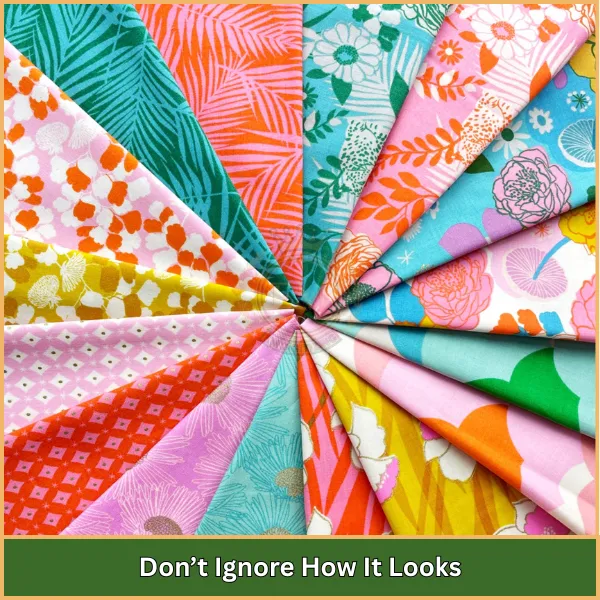
Obwohl es der Rücken ist, Es ist immer noch visuell wichtig. Wenn jemand Ihren Quilt umdreht, Sie werden es bemerken!
Einige Leute passen zur Rückens nach vorne. Andere werden wild und wählen etwas Helles und Spaßes aus. So oder so funktioniert; Es ist Ihre kreative Wahl.
Ebenfalls, Denken Sie an Ihre Fadenfarbe. Wenn Ihre Unterstützung dunkel ist und Ihr Quiltfaden leicht ist, Die Stiche werden sich wirklich zeigen.
Dies kann entweder eine coole Funktion oder etwas sein, das Sie eher vermeiden möchten.
Will verstecken Kleine Nähte Fehler? Verwenden Sie einen geschäftigen Druck. Möchten Sie ordentliche Quiltlinien zeigen? Wählen Sie eine feste Farbe. Denk dran: das Quilt -Backing -Stoff ist auch Teil der Kunst!
5. Sollten Sie Ihren Stoff vorüben? Ja, Du solltest!
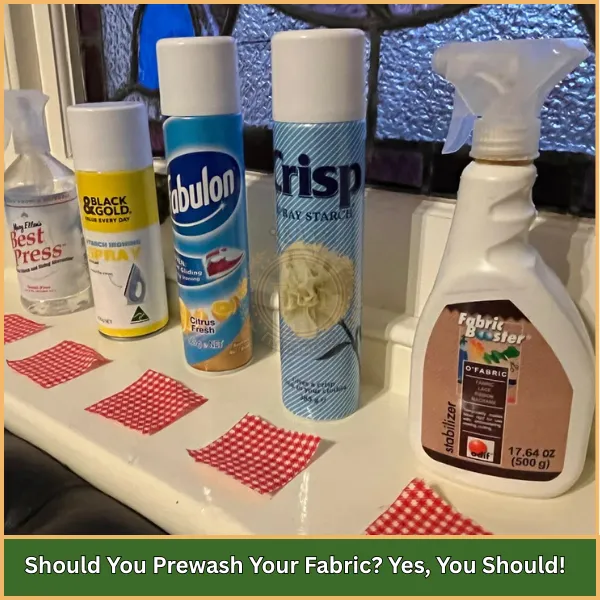
Lassen Sie mich Sie etwas fragen: Haben Sie jemals ein neues T-Shirt gewaschen und es wurde plötzlich kleiner?
Das passiert auch mit Quilt -Stoff.
Die meisten Baumwoll- und Flanellstoffe schrumpfen nach der ersten Wäsche. Also, wenn Sie Ihre nicht vorüben Stoffrücken für Quilts, Und es schrumpft später, Der Quilt könnte pucker oder falten.
Hier erfahren Sie, wie es geht:
- Waschen Sie den Stoff sanft
- Lass es vollständig trocknen
- Geben Sie ihm ein schnelles Bügeleisen, um es abzuflachen
Dieser kleine Schritt hält Ihren Quilt für lange Zeit glatt und schön.
6. Wie ist Ihr Budget?? Lass uns real sein
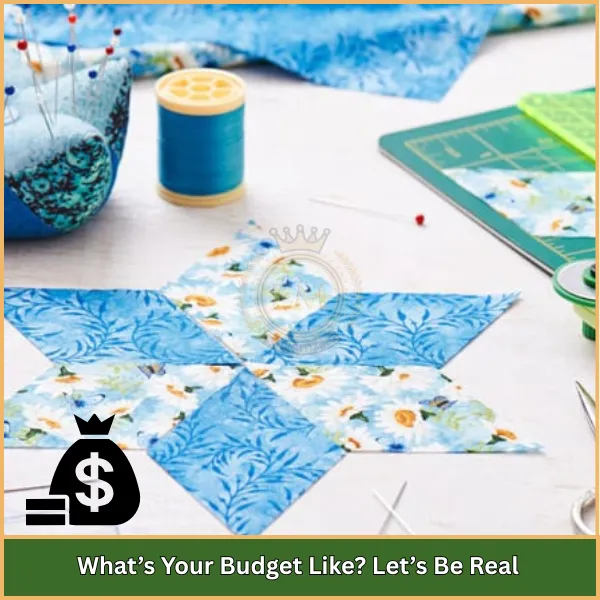
Wir alle wollen das Bester Stoff, Aber manchmal müssen wir mit dem arbeiten, was erschwinglich ist.
Hier ist eine grobe Idee:
- Grundlegender Musselin oder solide Baumwolle: ungefähr 4 bis 6 US -Dollar pro Hof
- Designerstoffe oder -Pulver: kann bis zu 18 bis 22 US -Dollar pro Hof steigen
Wenn Sie ein knappes Budget haben, Probieren Sie feste Stoffe oder sogar a 100% Baumwollbettblatt (gewaschen, Natürlich!). Einige Quilters sogar Stück übrig gebliebene Stoffe für den Rücken, Kreativ und umweltfreundlich!
Wenn Sie Kosten mit Stoffqualität und Größe ausgleichen, Das werden Sie oft finden Bester Stoff für Quilt -Unterstützung bedeutet nicht immer teuer.
Versuchen Sie das: Fäden anschließen Essentielle Baumwolle: Es ist erschwinglich und großartig für Anfänger und Profis.
7. Möchten Sie den Rücken trinken oder einfach halten?
Nehmen wir an, Ihr Quilt ist zu groß für Standard-Breitenstoffe. Sie haben zwei Optionen:
- Stoff steigern (Schließen Sie sich zwei oder mehr Panels an)
- Verwenden Barrback -Stoff für Quilts
Manche Menschen lieben es, den Rücken zu sammeln. Sie verwenden Schrott oder machen ein kleines Patchwork. Es ist kreativ und macht Spaß!
Aber wenn Sie das alles vermeiden möchten, Gehen Sie für breiter Rückenstoff für Quilts. Es ist schnell und ordentlich.
Eine gute Wahl ist Henry Glass &; CO. 108Quilt -Rückschläge, Sie kommen in lustigen Drucken und sparen Ihnen viel Zeit.
Lassen Sie es uns abschließen
Das Recht wählen Stoff für Quilts unterstützt lässt Ihren Quilt besser aussehen, sich weicher fühlen, und länger länger. Denken Sie darüber nach, für wen der Quilt ist, wie groß es ist, Und welcher Stoff passt am besten. Eine gute Unterstützung vervollständigt Ihren Quilt von vorne nach hinten.
Wenn Sie Stickerei hinzufügen möchten, Sie benötigen ein ordnungsgemäßes digitalisiertes Design. EMDigitalisierung kann Ihnen dabei helfen. Sie bieten qualitativ hochwertige Arbeit, schnelle Lieferung, und 24/7 Unterstützung. Und wenn es Ihre erste Bestellung ist, du wirst Jetzt komm 50% aus.
Versuchen Sie noch heute Emdigiting und beenden Sie Ihren Quilt mit einer professionellen Note!
Häufig gestellte Fragen
Die Schicht zwischen dem Quilt -Oberteil und der Unterstützung wird als Schlag bezeichnet. Es fügt Weichheit hinzu, Wärme, und Dicke zu Ihrem Quilt.
Nicht alle Stoffe funktionieren gut. Cotton is best for most quilts because it’;s leicht zu nähen und sich weich zu fühlen. Avoid stretchy or heavy fabrics unless you’;Re erfahren.
Messen Sie Ihren Quilt, hinzufügen 4 Zentimeter zu allen Seiten, und dann den Stoff basierend auf der endgültigen Größe schneiden. Schneiden Sie am geraden Getreide entlang, um die besten Nähergebnisse zu erzielen.
Multiplizieren Sie die Länge Ihres Quilts mit der Anzahl der Fabrikbreiten (Schuss) Panels, die Sie brauchen. Dann teilen Sie diese Zahl durch 36 Um die gesamte Laufzeit zu erhalten. Runden Sie auf den nächsten ¼ Yard um.
Wählen Sie eine Farbe oder einen Druck, der zum Thema Ihres Quilt passt. Feste Farben zeigen Quiltstiche deutlich, während gedruckte Stoffe kleine Fehler verbergen können.
Die Haupttypen sind:
- Zusammengestellte Quilts aus Stoffblöcken
- Applikationen Quilts mit Formen oben genäht
- Ganzkleid-Quilts aus einem großen Stoffstück hergestellt
Hinzufügen 4 Zoll zu jeder Seite Ihres Quilt -Tops. Berechnen Sie dann, wie viele Stoffbreiten Sie den Rücken abdecken und sich mit der Länge des Quilts vermehren müssen. Dies sagt Ihnen, wie viel Stoff zu kaufen ist.
